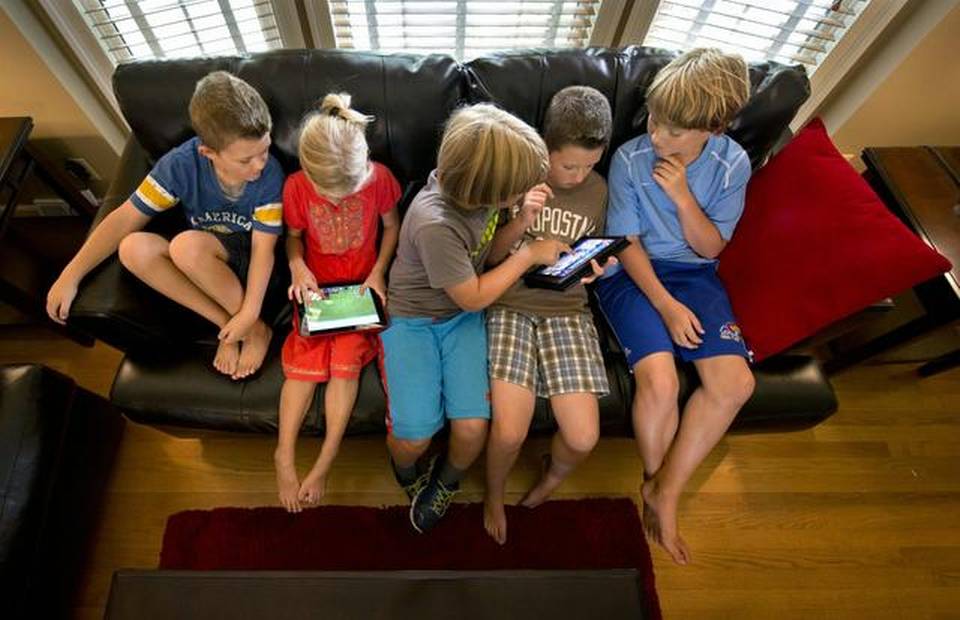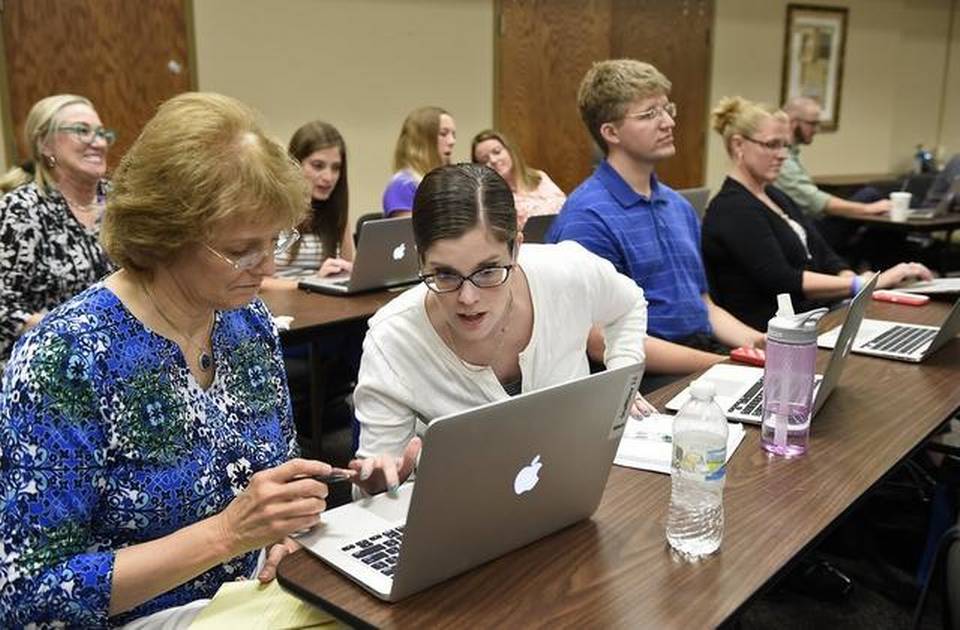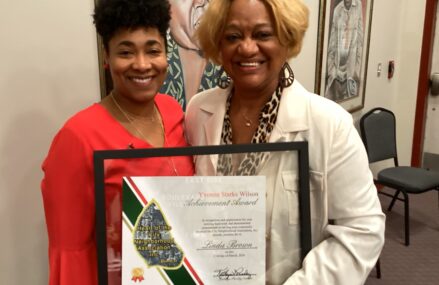
BY JOE ROBERTSONTHE KANSAS CITY STAR
Pardon Shawnee Mission parent Malinda Sutton if she feels like a desperate gunner in the old “Space Invaders” arcade game.
She knows MacBooks and iPads by the thousands stand primed and loaded on pallets in a Shawnee Mission School District warehouse and teachers by the hundreds spent dozens of summertime hours in training sessions.
The district’s $20 million classroom transformation represents the largest — but by no means only — mobile technology investment sweeping over Kansas City area schools. A Star survey finds that nearly every area district has plans to either put a mobile computer in the hands of every student in most of their classes — as Shawnee Mission will start doing this week — or let them bring their own.
The invaders are marching through our schools and into our homes, firing away with iTunes, iWork, Chromebooks and Google apps. Flinging insurance fees. Snaring children whose parents already can scarcely pry them off their own ubiquitous computer screens.
“I hate these devices,” Sutton said. Children “get sucked in, and they become like little addicts.”

The handwriting tutor worries about lost skills and numbed minds. Our institutional move to digital education, she fears, makes surrendering to the Apples and Googles of the world all the more inevitable.
Are they going to eat our brains?
Clearly we’ve passed a tipping point around here, exceeding a growing national trend toward getting computers in the hands of every student.
Of 32 area school districts responding to a survey by The Star, 22 have already achieved or are planning a 1-to-1 ratio of computers to students at least in high school, and in many cases all the way down into elementary school.
Fifteen districts are letting students bring their own devices — the “BYOD” approach.
Those numbers include six districts that are trying pieces of both.
In its 2014 national survey on mobile technology, Interactive Educational Systems Design found that 70 percent of the nation’s school districts are deploying significant amounts of mobile technology to their students, up 10 percentage points from a year ago. An additional 10 percent say they are very likely to go mobile within the next one or two years.
Only 1 in 5 of the nation’s districts are now deploying at a 1-to-1 ratio, but the survey shows more would be there if not for barriers of cost.
It’s not an unpopular move. Shawnee Mission’s leap was spurred by surveys of parents, students, teachers, staff and community members who feared the district was falling behind in getting mobile technology in classrooms.
When the Liberty Public Schools prepared this year to open a specialized, technology-rich elementary school with 300 slots, a thousand children’s parents applied.
But hang on.
Parents like Sutton and neighbor Victoria Savich are onto something when they worry about how we balance technology in children’s lives, researchers say.
Be assured, say administrators in Shawnee Mission and other school districts, that schools are aware and are keeping in mind all the different ways children learn and grow.
Indiana University psychologist Karin James in 2012 studied the MRI scans of 5-year-olds as they practiced letters. The acts of handwriting the letters fired up distinct brain activity beyond the acts of typing or even tracing letters.
Many researchers are supporting evidence that non-computer-linked exercises such as handwriting, memorization and even physical play remain important to child development.
And then there are the effects that Savich can plainly see as well as any of us on youths’ social interactions.
There is a noticeable dearth of eye contact, she said. Her husband sees it even when he’s conducting job interviews. Their eyes cast down at their hands, even when they aren’t holding their smartphones.
“They don’t know the social cues,” she said. “They get impatient.
“I’m going to make a valiant effort to make sure my children learn good social skills, but it’s going to be hard.”
An evolution
It might help ease some anxiety, said North Kansas City Superintendent Todd White, if we think of what’s happening to our classrooms as “an evolution — not a revolution.”
Now beginning its sixth year of 1-to-1 laptops in its high schools, North Kansas City isn’t storming over valued traditional practices and burning them in the halls.
The computers are tools, he said, that greatly enhance multiple strategies for teaching and learning, old and new.
Still, it’s proving to be one heck of an evolution.
The New Media Consortium’s 2014 Horizon Report for K-12 education reports that the roles of teachers are changing right now from the primary providers of knowledge to the guides who help children construct their knowledge.
Cloud computing capacity and the increasing cross-compatibilities of platforms are making 1-to-1 and BYOD initiatives more powerful.
Shawnee Mission teachers are already building and sharing online resources and lessons, STEM director Christy Ziegler said, mirroring a trend that the Horizon Report said is driving better use of mobile technology. A growing trove of shareable education resources is making teachers stronger.
We’re just a few years away, the report predicts, from seeing widespread experiences of children racing after learning targets the way they chase higher levels in their online games, maximizing their own pace, with immediate feedback of success and struggle for the students and the teachers.
“There are a lot of adult misperceptions that all the time kids spend (on mobile devices) is bad,” said Keith Krueger, chief executive officer of the Consortium for School Networking in Washington, D.C.
“It’s not an inherently isolating experience like watching TV,” he said. “Most of the things they are doing (in interactive online games) are with other kids, even hundreds of kids. They may be much more social than we ever were when it was me and the three kids I hung out with.”
It is a reasonable concern that schools could go too far, and the best remedy is keeping classrooms transparent, said Tom Murray, digital learning policy and advocacy director for the Alliance for Excellent Education in Washington.
Parents should see that the teacher is still the most important influence in the class, he said. They should still see reading, writing, speech and art, along with deeper projects and more collaboration.
And yes, there will be problems with online distractions, good use of time and knowing when to be tuned in on the screen and when to focus on the real person in front of you. That’s all part of learning “digital citizenship,” and schools can and should help with that, Murray said.
“The key is, what is the outcome?” he said. “The social side of learning is vital. These are life skills.”
Big market
No doubt Apple, Microsoft, Google, Cisco and the other tech giants love all this 1-to-1 talk.
The hunger for K-12 technology represents a $6 billion market that the venture capital firm GSV Advisors projects will reach $13.4 billion by 2017. They also know that the choices schools make now will influence the market choices students make as adults.
And unlike with the traditional education market battles over textbooks and other classroom materials, schools making tech decisions are sorting through product names that are deeply familiar outside school walls.
Everyone knows very well — because we’ve seen it ourselves — that these corporations are coming after schools with “sexy, savvy marketing,” said Leslie Wilson, CEO of the One-to-One Institute in Lansing, Mich. “It is a danger to be owned by Apple.”
“You know there is a reason,” Murray said, “that Google Apps for Education are free.”
MacBook Air laptops and Google Chromebooks have been the dominant choices by area school districts picking mobile computers with keyboards at the high school and middle school levels. For schools placing tablets in elementary and middle grades, iPads have been the dominant choice.
Schools need first to set their vision on how they want children to learn, build leadership and marshal their resources in a diligent and open discussion, Wilson said. And when they pick their product, “they need to be able to say why.”
Shawnee Mission Superintendent Jim Hinson said classroom technology was the “No. 1 concern” he heard from the community when he came aboard July 1, 2013.
A team of educators went to work designing the digital learning initiative, visiting or calling on other districts locally and nationally before presenting the massive proposal in January.
Parent meetings will be part of the rollout of the devices this week, Ziegler said, to help them consider optional insurance policies, share strategies to help children protect their devices and talk about how the work in classrooms will change.
Some 2,100 teachers and administrators began training on the MacBooks and iPads last March and took them home over the summer. About a thousand of them joined in at least one voluntary workshop during the summer break, Ziegler said.
The district’s “iTunes U” hub for sharing resources and lessons already has 54 links.
Kids get it
Here’s some comfort for the parents.
Shelley Jones, first-year kindergarten teacher out of Emporia State University, is brimming with enthusiasm.
She was one of some 130 incoming teachers to Shawnee Mission getting a crash starter course last week with the Apple trainers.
The reading apps she has found, a Dr. Seuss app, even a finger-painting app, are going to delight her kids, she said.
She sees herself circulating through her classroom as her children create their work, kneeling face to face. And if she needs to update what she’s showing them on the big screen, she can do it right there with a swipe and tap on the tablet in her hand.
“I won’t have to run back to the front and click,” she said.
Jeremy Wayne is going to be teaching seventh-grade science. He moved from another district because he wanted the chance to teach “with so much connectivity.”
“I see the devices making my teaching more effective, going deeper into content, making grading and record-keeping more efficient,” he said.
No more will his classes need to share computers off rolling carts and endure that “inherent time killer” of getting them passed out and waiting for everyone to boot up.
There will be some glitches and lessons to learn along the way, he’s sure, but students relish the chance to help solve technology puzzles.
“The kids are the ones who are pliable,” he said. “They’re going to get into it and work with it. It’s up to us to meet them there.”
Savich has seen the same enthusiasm when she visited with teachers at her child’s school. They shared in the parents’ concern about balance, about keeping children moving and using their hands, with their eyes off their screens.
“They say they are going for a happy medium,” Savich said, “and I 100 percent believe the teachers will do the best they can.”
The school supply lists, already completed and ready, still called for pencils, paper, scissors, construction paper and glue, the parents said.
But this year, they also had to buy a stylus.
Their kids can hardly wait, that’s for sure.
When asked how they reacted to the news when their teachers told them they were getting iPads, Savich’s 9-year-old son, Jackson, pumped two fists in the air and said, “Hallelujah!”
Sutton’s 11-year-old son, who’s also named Jackson, said, “It was like fireworks were going off in our heads. It’s going to be cool.”
To reach Joe Robertson, call 816-234-4789 or send email to [email protected].
69
The percentage of area school districts (22 out of 32) responding to a Star survey that are planning, or have already begun, a 1-to-1 computer distribution in some or most of their classrooms.
$20 million
The price tag, including training and professional development, on the Shawnee Mission School District’s initiative to distribute laptops or tablets to all of its 27,000 students, and distribute both to 2,100 teachers and staff.
$13.4 billion
The projected size of the U.S. market for technology in K-12 schools by 2017, according to GSV Advisors.
Read more here: http://www.kansascity.com/news/business/technology/article1187473.html#storylink=cpy


